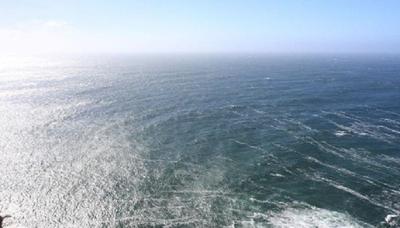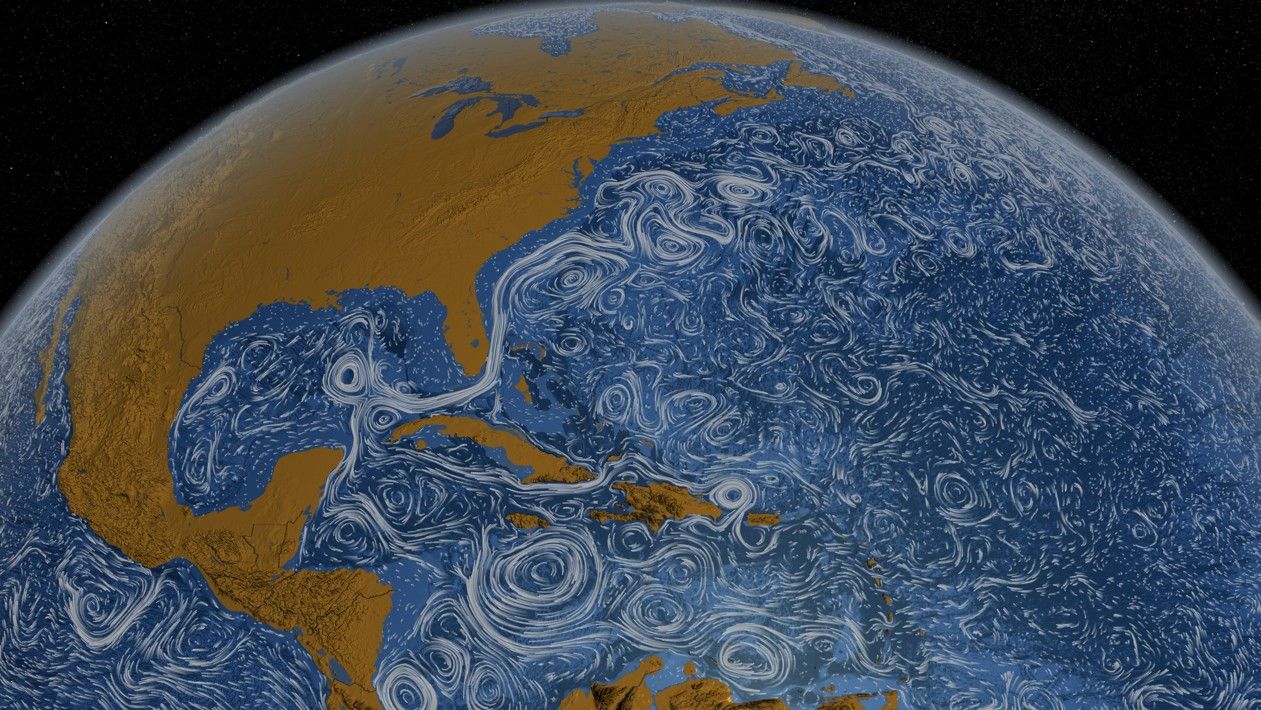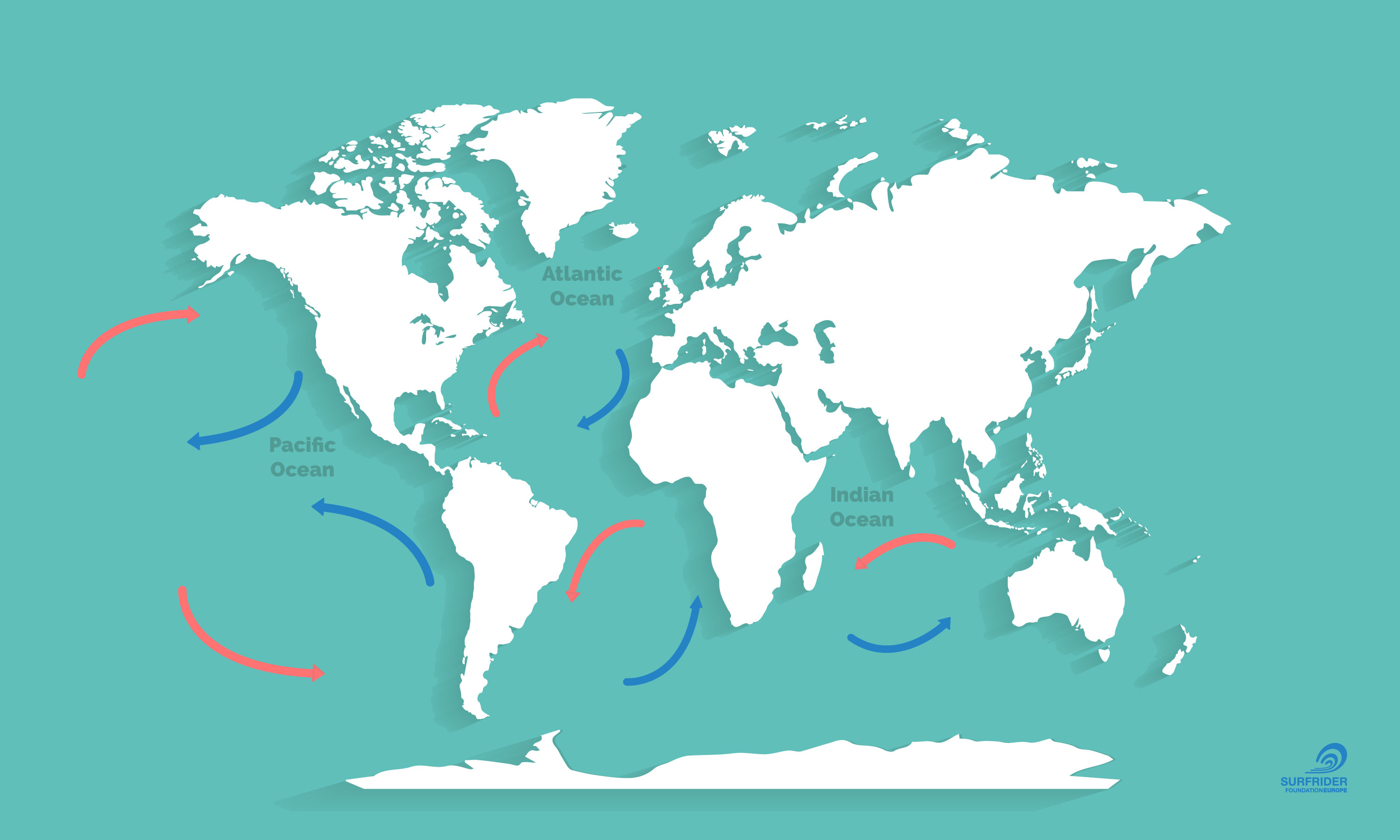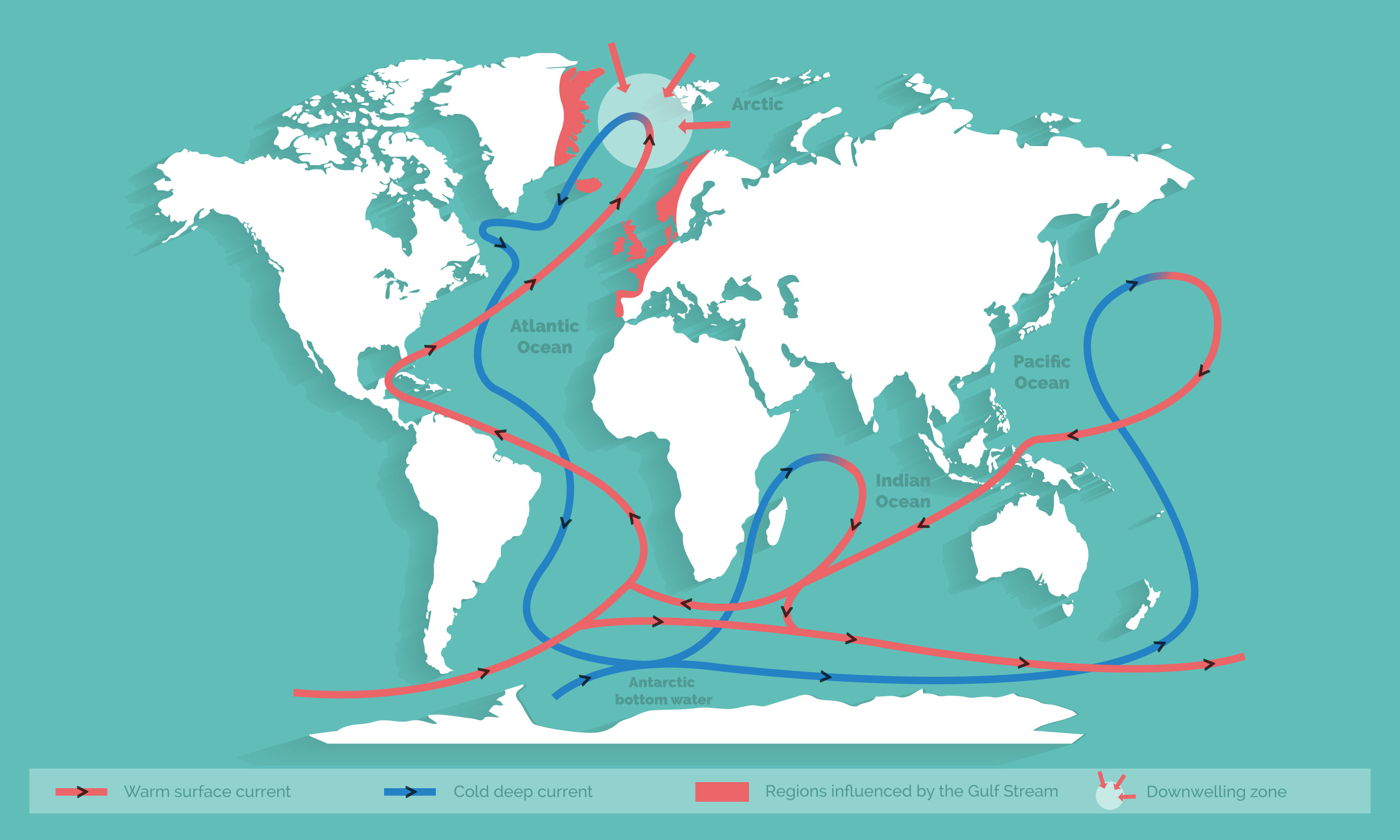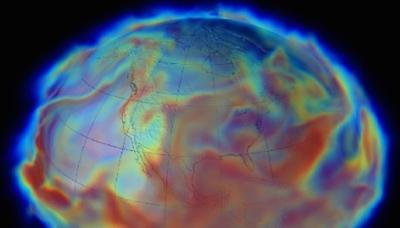Ocean Circulation
Introduction
he ocean is not simply a vast expanse of still water. On the contrary, sea water is in constant movement due to the ocean currents. Currents are directed movements of sea water that can resemble enormous rivers and streams in the ocean. The displacement of these immense water masses distributes solar energy around the Earth's surface and influences temperatures between the equator and the poles. Ocean currents, such as the famous Gulf Stream, thus act as regulators for the planet's climates.
Ocean Surface Currents
Surface currents are sea water movements that are caused by atmospheric circulation (wind) above the ocean surface. Depending on their location, these currents can be warm or cold. Through their movement, they enable a better distribution of heat and regulate local climates. These surface currents very noticeably follow the same route as the prevailing winds. Only the continents keep their courses from merging completely. The continents represent obstacles that redirect ocean currents into swirls, or gyres. Another factor influencing the direction of the surface currents appears in the form of the Earth's rotational force called Coriolis force. The Earth rotates on its own axis from east to west. As a result, ocean currents in the northern hemisphere rotate clockwise, and in the southern hemisphere, they rotate counter clockwise.
Zooming in on the Gulf Stream
The Gulf Stream is a surface current in the North Atlantic, which redirects the waters from the Caribbean towards Europe and thus brings along some of the warmth from the equator. As Canada does not benefit from the warmer water supplied by the Gulf Stream, there is a large difference in temperatures and climates between Europe and North America.
Deep Ocean Currents
Unlike surface currents, deep ocean currents are not influenced by the wind. Also known as density currents, these deep ocean currents are driven by differences in temperature and salinity. In the same way that oil and water do not mix, denser water flows below less dense water, and the two of them do not merge together. In the ocean, the density of a surface current may be increased by dropping temperatures and rising salt content, until it plunges into the depths of the ocean. This mechanism is responsible for the typical pattern of currents we are observing, as denser currents deep in the ocean basin flow underneath the less dense, warmer surface waters with a lower salt content.
Differences in temperature and salinity create the deep ocean currents.
Thermohaline Circulation
Together, surface currents and deep ocean currents form a permanent global circulation loop called the thermohaline circulation. This phenomenon is also known as the global 'ocean conveyor belt', as shown in the graphic. Deep water currents (blue) are mainly created in the North Atlantic and travel towards the South Atlantic. Along the journey, this colder, denser water progressively wells up and percolates into the south Atlantic, the Pacific, and the Indian Ocean. The return journey of this conveyor belt in the North Atlantic is made by warmer surface currents (red) whose movement is linked to the atmospheric circulation (wind). It has been estimated that it takes a drop of water around one thousand years to complete the full loop.
